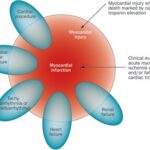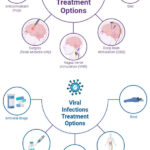Myoclonic epilepsy is a neurological disorder characterized by sudden, involuntary muscle jerks or twitches, known as myoclonic seizures. These seizures may occur independently or as part of a broader epileptic syndrome. They typically arise due to abnormal electrical activity in the brain and can affect individuals of all ages, though some forms are more prevalent in childhood and adolescence.

Types of Myoclonic Epilepsy
1. Juvenile Myoclonic Epilepsy (JME)
- The most common form, usually emerging in adolescence.
- Characterized by morning myoclonic jerks, generalized tonic-clonic seizures, and absence seizures.
- Often triggered by sleep deprivation and flashing lights.
2. Progressive Myoclonic Epilepsies (PMEs)
- A group of rare genetic disorders including Lafora disease and Unverricht-Lundborg disease.
- Characterized by worsening myoclonic seizures and cognitive decline.
3. Lennox-Gastaut Syndrome (LGS)
- A severe, childhood-onset epilepsy that includes multiple seizure types, including myoclonic seizures.
- Associated with intellectual disability and developmental delay.
4. Myoclonic-Astatic Epilepsy (Doose Syndrome)
- A rare epilepsy syndrome occurring in early childhood.
- Characterized by myoclonic and atonic (drop) seizures.
Causes and Risk Factors
Genetic Factors
- Many cases of myoclonic epilepsy have a hereditary component.
- Mutations in genes such as EPM2A, SCN1A, and GABRA1 are linked to different types.
Neurological Abnormalities
- Brain malformations or structural changes.
- Metabolic disorders affecting neurotransmitter function.
Environmental Triggers
- Sleep deprivation, stress, and alcohol consumption.
- Photosensitivity in conditions like JME.
Symptoms of Myoclonic Epilepsy
- Sudden muscle jerks, primarily in the arms and upper body.
- Seizures that occur upon waking.
- Loss of awareness in some cases.
- Associated tonic-clonic seizures in severe forms.
Diagnosis and Medical Evaluation
1. Clinical History and Examination
- A neurologist evaluates seizure patterns, family history, and potential triggers.
2. Electroencephalogram (EEG)
- Detects abnormal brain wave activity, often showing generalized spike-and-wave discharges.
3. Imaging Studies (MRI, CT Scan)
- Identifies structural abnormalities if present.
4. Genetic Testing
- Recommended for inherited forms of epilepsy.
Treatment and Management
1. Antiepileptic Medications (AEDs)
- Valproate: First-line treatment for JME.
- Levetiracetam and Lamotrigine: Alternatives with fewer side effects.
- Clonazepam: Sometimes used for refractory cases.
2. Lifestyle Modifications
- Maintaining a regular sleep schedule.
- Avoiding known seizure triggers such as flashing lights and alcohol.
- Managing stress through relaxation techniques.
3. Dietary Interventions
- Ketogenic Diet: High-fat, low-carb diet beneficial for drug-resistant cases.
- Modified Atkins Diet: Less restrictive alternative showing promising results.
4. Vagus Nerve Stimulation (VNS) and Surgery
- VNS: Implantable device that reduces seizure frequency.
- Epilepsy Surgery: Considered in severe, drug-resistant cases.
Prognosis and Long-Term Outlook
- Many patients, especially with JME, respond well to medication and can lead normal lives.
- PMEs and LGS often require lifelong management with significant disability risk.
Myoclonic epilepsy encompasses a range of conditions with varying severities and treatment options. Early diagnosis and appropriate management significantly improve outcomes, allowing many individuals to maintain a good quality of life. Ongoing research continues to enhance understanding and treatment strategies for this complex neurological disorder.

